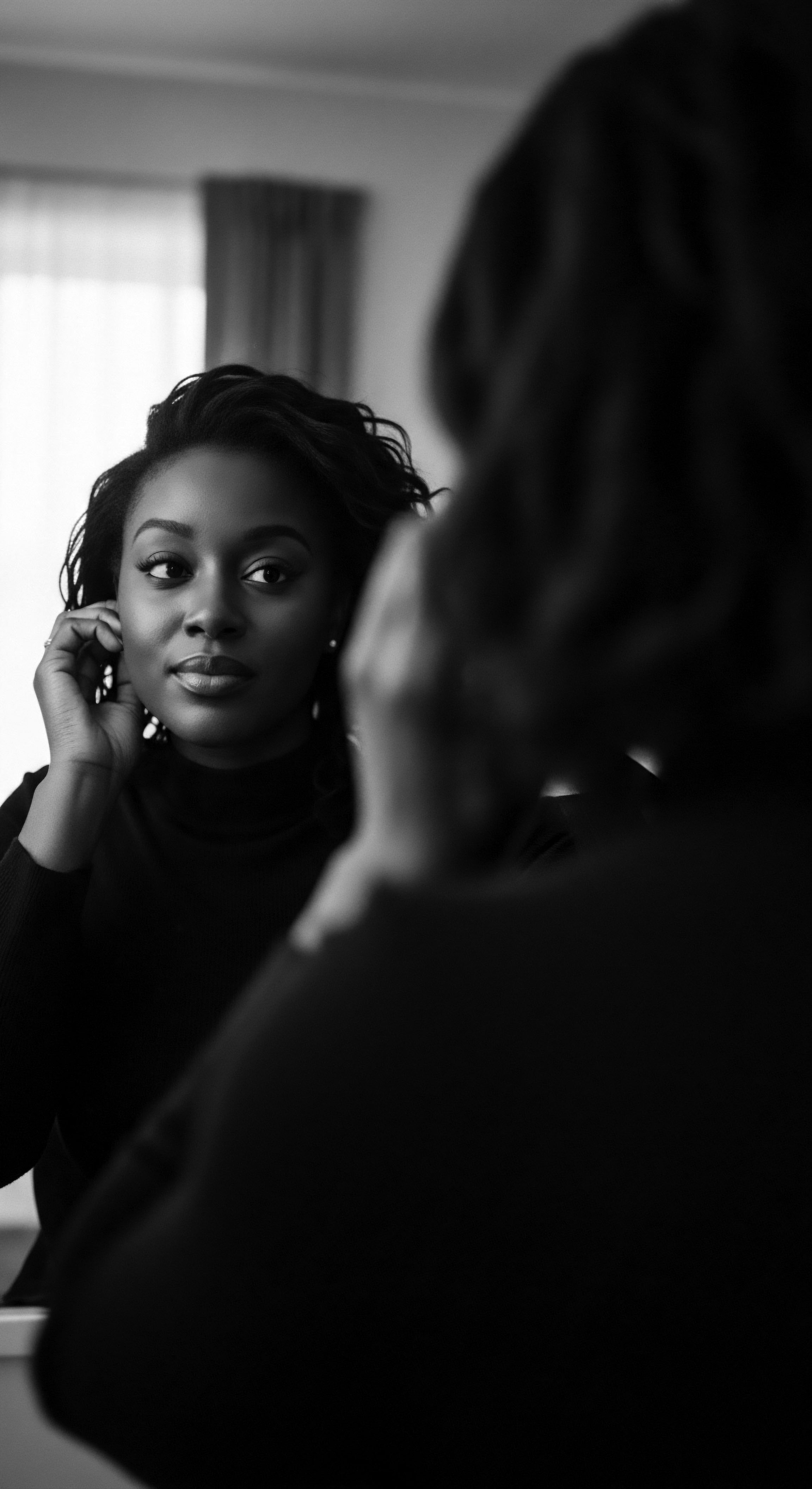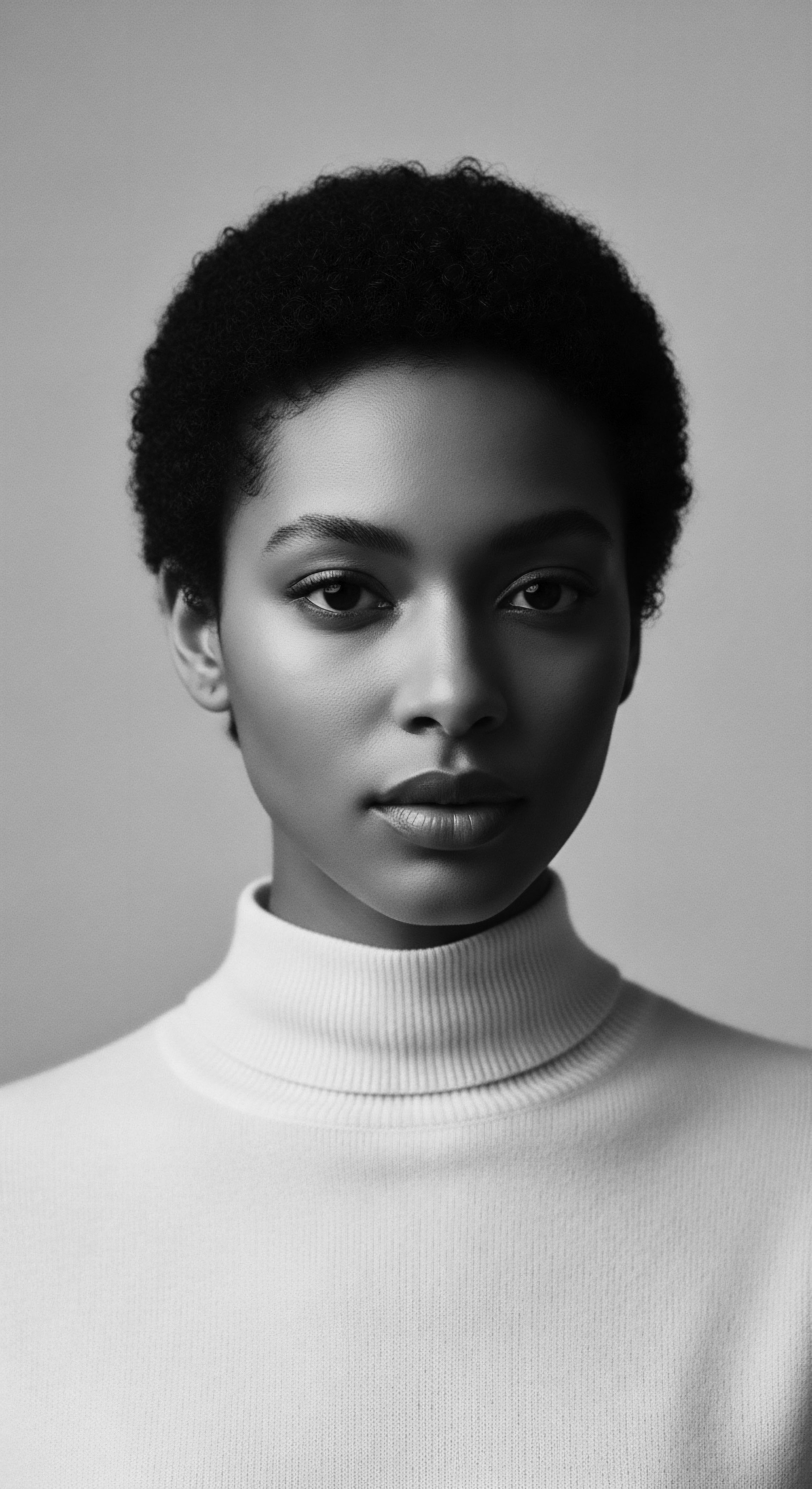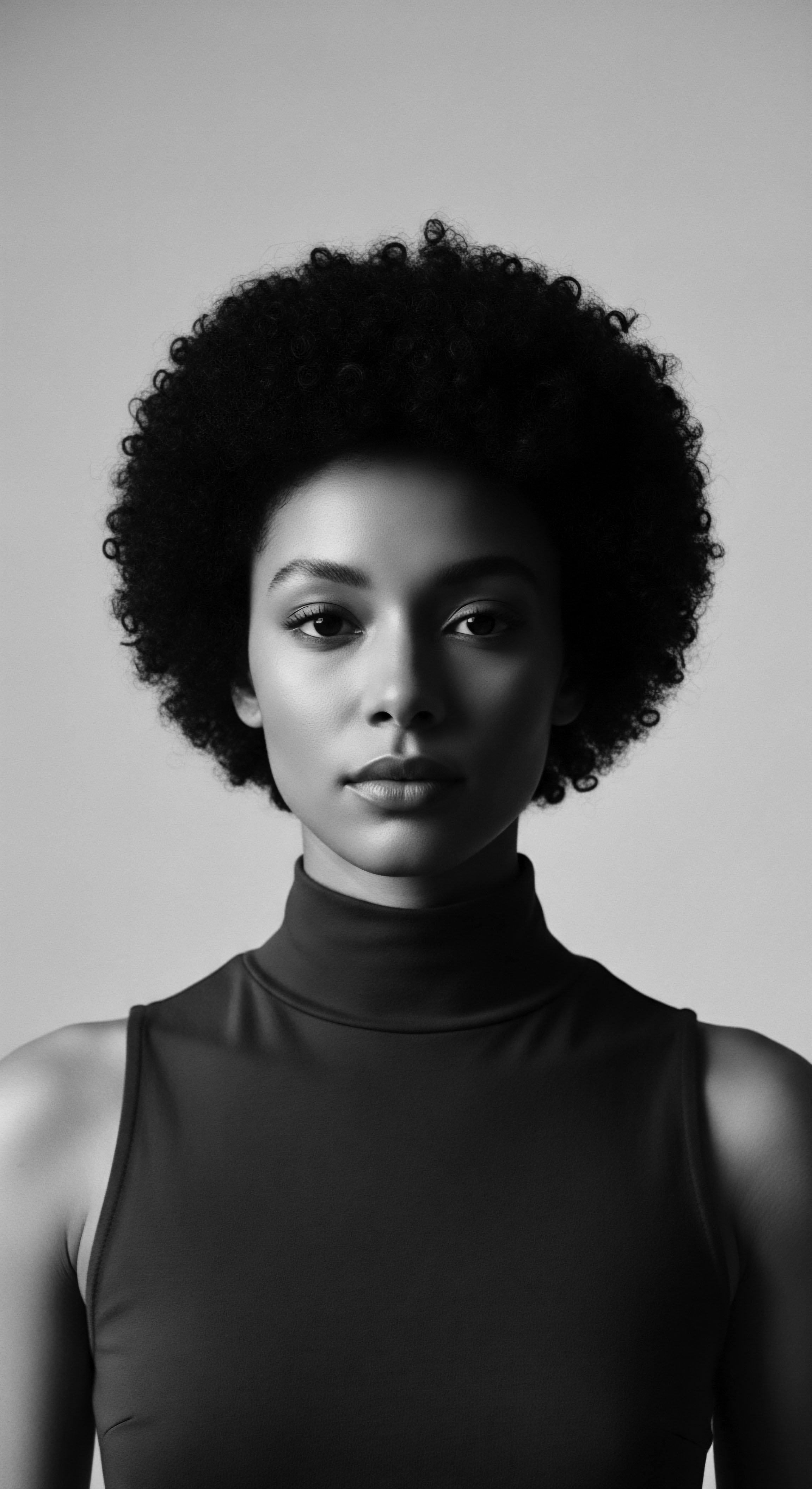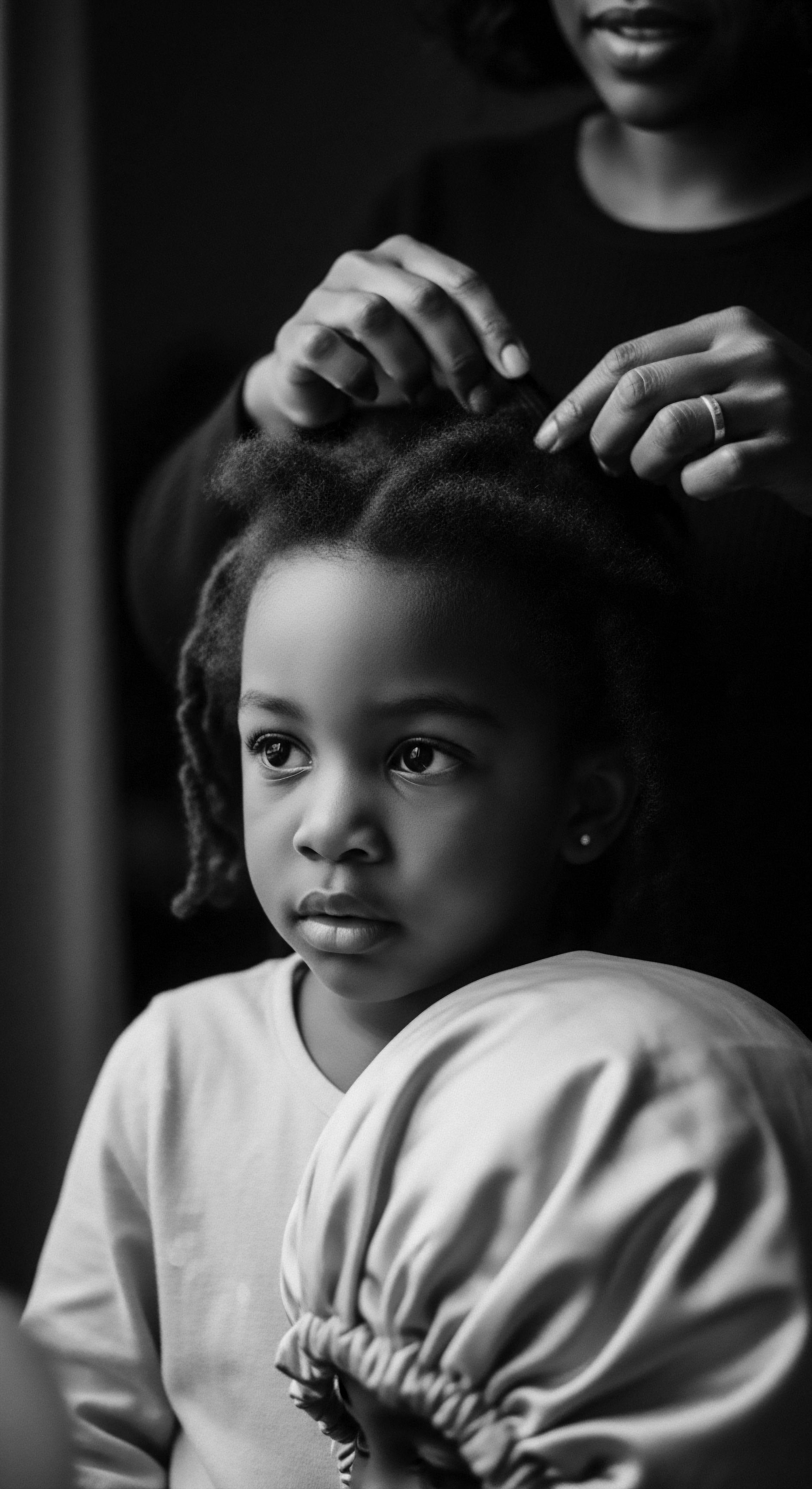
Roots
To journey into the ways the Civil Rights Movement shifted notions of beauty for textured hair means first to listen to the echoes from the source, the deep, resonant hum of ancestral wisdom that shaped Black and mixed-race hair heritage long before the turbulent mid-20th century. For too long, the inherent glory of coily, kinky, and curly strands, those magnificent helices of human expression, was silenced, pushed into shadowed corners by dominant aesthetics. Our exploration delves into a period when the very fiber of identity was under immense pressure, yet within that pressure, a diamond formed—a radiant redefinition of what it meant to be beautiful. It was a time when hair, the crown of our being, ceased to be a quiet compromise and became, instead, a declarative statement, a flag unfurled in the winds of change.

The Sacred Strands
Before the transatlantic slave trade violently severed ancestral connections, hair in African societies was a profound canvas of identity, spiritual connection, and social standing. Intricate styles, braids, and adornments spoke volumes about an individual’s family, tribe, age, marital status, or even their readiness for battle or spiritual rituals. (Tharps, 2021). The very act of hair care was communal, a tender thread weaving together generations, passing down techniques and knowledge.
When enslaved Africans arrived on these shores, one of the first, most dehumanizing acts was often the forced shaving of their heads. This was a deliberate attempt to erase their cultural identity, to strip them of a vital link to their heritage and selfhood. The denial of tools, time, and appropriate products meant ancestral practices withered, replaced by a brutal imposition of a “problematic” hair narrative.
After the formal end of slavery, the legacy of this dehumanization persisted. Eurocentric beauty ideals, with their emphasis on straight, smooth hair, became the yardstick by which Black hair was measured, almost always to its detriment. Textured hair, in its natural state, was deemed “unkempt,” “unprofessional,” or “unattractive”. To assimilate, to find work, to gain even a sliver of societal acceptance, many Black individuals felt compelled to chemically alter their hair, submitting it to harsh relaxers and hot combs.
Madam C.J. Walker, a pioneer in Black hair care, built an empire providing solutions for straightening hair, and while her business savvy cannot be understated, her work also reflected the pervasive societal pressure for Black women to conform to white beauty standards of the era. This was the landscape of hair before the Civil Rights Movement began to stir, a landscape where the natural growth of one’s hair was often a barrier rather than a celebration.
The re-emergence of natural hair during the Civil Rights Movement was a reclamation of ancestral heritage, transforming beauty standards from imposed norms to expressions of inherent self-worth.

Shifting Perceptions of Textured Hair
The Civil Rights Movement, with its fierce demand for equality and justice, laid the groundwork for a radical re-evaluation of Black identity, including its physical manifestations. The movement’s ethos, particularly the “Black is Beautiful” rallying cry, directly challenged the entrenched racist notion that anything associated with Blackness, including textured hair, was inherently ugly or inferior. This shift was not merely cosmetic; it was a psychological and cultural reawakening. The movement asserted that Black physical features, in their full spectrum of skin tones, facial structures, and hair textures, held their own distinct and inherent beauty.
The redefinition of beauty standards for textured hair color (meaning the natural hue of textured hair) was a profound act of defiance. It pushed against centuries of conditioning that equated beauty with European features and light skin tones. This meant celebrating the natural, unadulterated curl patterns—from tight coils to loose waves—and the deep, rich shades of black and brown that are their natural companions.
The movement encouraged individuals to shed the internalized self-rejection that prompted chemical straightening and to instead embrace the biological truth of their hair. It was a call to see intrinsic beauty, not through a borrowed lens, but through an authentic, self-defined perspective.

Ritual
The Civil Rights Movement, particularly its Black Power wing, did not simply whisper of beauty; it roared. This era birthed a dynamic ritual of self-expression where textured hair became a potent symbol of liberation, a defiance against assimilationist pressures that had long stifled authentic identity. This was the moment when ancestral rhythms of hair care and styling, long suppressed, began to resonate with renewed vigor, reshaping the very contours of acceptable aesthetics. It transcended mere adornment; it was a deliberate act of self-definition, a commitment to one’s own heritage.

The Afro’s Ascent to Symbolism
Central to this redefinition was the rise of the Afro, a style that became more than a choice in grooming; it manifested as a powerful political statement. The Afro, or ‘fro as it was often called, allowed textured hair to grow upwards and outwards, defying gravity and, symbolically, the oppressive standards that sought to flatten Black identity. It was a visual rejection of Eurocentric beauty norms, asserting the inherent beauty and strength of Black hair in its natural state. Figures such as Angela Davis, a prominent activist, wore her Afro with an unapologetic pride, making it an iconic representation of Black empowerment and a call for others to celebrate their heritage.
Her hair, in its expansive, natural form, conveyed a message before words were spoken, a silent yet unmistakable allegiance to the movement. (Byrd & Tharps, 2014).
The embrace of the Afro by activists and artists alike—from the Black Panther women to musical figures like Nina Simone and the Jackson Five—helped to normalize and popularize natural hair as a mainstream aesthetic within the Black community and beyond. This was a radical departure from the decades where pressed or straightened hair was the prerequisite for social acceptance and professional opportunities. The Afro pick, an ancient tool with roots in Kemet and West African cultures where it served as a status symbol and a practical instrument for hair maintenance, was recontextualized. In the 1960s, it became a political emblem, often personalized with a clenched Black fist on its handle, loudly asserting political and cultural solidarity with the Black Power movement.

Beyond the Afro ❉ Other Heritage Styles
While the Afro commanded significant attention, the movement also revitalized and celebrated other ancestral styles, affirming a broader spectrum of textured hair’s natural capabilities. Braids, with their rich history tracing back to 3500 BC in African cultures, signifying wealth, age, and marital status, saw a renewed appreciation. Cornrows, too, became more visible, carrying with them a legacy of communication—some even weaving escape routes for enslaved people.
The cultural significance of these styles, once suppressed, became a visible language of resistance and cultural pride. This period saw a powerful collective declaration ❉ natural Black hair, in its myriad forms, possessed an inherent dignity and beauty that required no alteration or apology.
The public adoption of natural hair styles, spearheaded by the Afro, transformed textured hair into a powerful political statement, embodying the spirit of self-love and resistance.
The shift was also evident in the commercial landscape, though initially slow. The existing beauty industry, largely catering to Eurocentric standards or offering straightening solutions, was challenged to acknowledge the burgeoning demand for products suitable for natural textured hair. This nascent market for natural hair care products began to emerge, often pioneered by Black entrepreneurs who understood the specific needs of these hair types. This economic shift, though gradual, further solidified the redefinition of beauty by signaling a viable market for products that supported, rather than altered, natural textures.
| Historical Period Pre-Colonial Africa |
| Dominant Hair Standard for Black Hair Diverse, symbolic, identity-rich styles (braids, coils, twists). |
| Impact on Textured Hair Heritage Hair served as a visual language of social status, tribal affiliation, spiritual belief, and life events. It was a profound expression of self and community, rooted in ancestral practices. |
| Historical Period Slavery & Post-Emancipation |
| Dominant Hair Standard for Black Hair Straight, Eurocentric hair became the ideal for acceptance and survival. |
| Impact on Textured Hair Heritage Forced shaving, neglect, and the subsequent pressure to assimilate led to the suppression of natural textures and traditional care. Textured hair was often deemed "unprofessional" or "unkempt." |
| Historical Period Civil Rights & Black Power Movement (1960s-1970s) |
| Dominant Hair Standard for Black Hair Natural hair, especially the Afro, became a symbol of Black pride and political resistance. |
| Impact on Textured Hair Heritage A powerful redefinition emerged, celebrating kinks, coils, and waves as inherent beauty. This period marked a conscious rejection of Eurocentric ideals and a reclamation of cultural identity through hair. |
| Historical Period Contemporary Natural Hair Movement |
| Dominant Hair Standard for Black Hair Continued celebration and diversification of natural textures; legal protections sought. |
| Impact on Textured Hair Heritage The legacy of the Civil Rights Movement persists, with ongoing efforts to combat discrimination and promote inclusive beauty standards globally through movements like the CROWN Act. |
| Historical Period This progression illustrates how external pressures shaped perceptions of textured hair, and how movements for liberation consistently led to a reclamation of ancestral hair forms as powerful statements of identity and heritage. |

Relay
The redefinition of beauty standards for textured hair, ignited by the Civil Rights Movement, set in motion a powerful relay race of cultural consciousness, passing the baton of self-acceptance and ancestral honor through generations. It transitioned from an outward political statement to a deeply personal practice, one that continually draws from the wellspring of heritage to inform holistic care and problem-solving for textured hair. This relay speaks to a continuing journey of self-discovery and collective affirmation, moving beyond mere aesthetics to a profound connection with one’s biological and cultural lineage.

How Did the Civil Rights Movement Influence Product Development for Textured Hair?
Before the movement, options for Black hair care predominantly focused on straightening or taming textured hair to align with dominant beauty ideals. Products were often harsh, designed to chemically alter the hair’s natural structure. The surge in natural hair styles during the 1960s and 1970s, however, created a new demand that the established beauty industry was ill-equipped to meet. This void was gradually filled by pioneering Black entrepreneurs and innovators.
Companies like Johnson Products Company (JPC), while previously successful in the relaxer market, recognized the shifting tide. George E. Johnson, the founder of JPC, observed the growing embrace of natural styles and responded by launching Afro Sheen, a product specifically formulated to make natural hair easier to comb and add luster. This strategic pivot was not just a business decision; it signaled an acknowledgment of the changing beauty landscape and the validity of natural hair.
The impact extended beyond mainstream recognition, fostering a spirit of entrepreneurial independence within the Black community. Lisa Price, who founded Carol’s Daughter in 1993, is another example of how this legacy carried forward. Her company, built on homemade hair care products designed for textured hair, became a significant player in the natural hair care industry, demonstrating the enduring market for products that truly catered to these unique hair needs. These companies, rooted in community understanding and often driven by personal experiences with textured hair, paved the way for the vast array of natural hair products we see today, providing solutions that prioritize the health and integrity of textured strands over their alteration.
- Black Wall Street ❉ Early 20th-century Black communities built self-sufficient economies, including thriving hair salons and product lines, anticipating the need for specialized textured hair care long before the Civil Rights Movement.
- Community-Based Innovation ❉ Recipes for natural cleansers, conditioners, and styling aids were often shared and refined within Black communities, drawing on ancestral knowledge of herbs, oils, and plant-based ingredients.
- Entrepreneurial Spirit ❉ The economic empowerment sought by the Civil Rights Movement spurred Black individuals to create businesses, including hair care lines that catered to the previously underserved textured hair market.

How Did the Cultural Shift Towards Natural Hair Impact Legal Protections for Textured Hair?
The embrace of natural hair during the Civil Rights era was a powerful cultural act, but it did not immediately translate into universal acceptance or legal protection. Discrimination based on hair texture persisted, particularly in workplaces and schools. Textured hairstyles, despite their cultural significance and historical lineage, were frequently deemed “unprofessional” or “inappropriate,” leading to job denials, disciplinary actions, and other forms of bias. This ongoing struggle highlighted a critical gap ❉ while racial discrimination was outlawed by the Civil Rights Act of 1964, the interpretation of what constituted “race-based discrimination” often excluded hair, considering it a “mutable” or changeable characteristic.
A significant historical example of this struggle is the 1976 case of Jenkins V. Blue Cross Mutual Hospital Insurance. Beverly Jenkins was denied a promotion due to her Afro. The U.S.
Court of Appeals for the Seventh Circuit upheld her race discrimination lawsuit, affirming that workers were entitled to wear Afros under Title VII of the Civil Rights Act. This ruling, though impactful, did not universally resolve the issue, as courts continued to grapple with whether various natural styles, such as locs or braids, were similarly protected. The persistence of hair discrimination into the 21st century eventually led to the development of specific legislation. The CROWN Act (Creating a Respectful and Open World for Natural Hair), first passed in California in 2019, explicitly prohibits discrimination based on hair texture and protective hairstyles associated with race. This legislation, now adopted in many states and with federal efforts underway, represents a continuation of the Civil Rights Movement’s fight for comprehensive equality, ensuring that the choice to wear one’s natural hair, a profound connection to ancestral heritage, is legally protected.
The enduring legacy of the Civil Rights Movement in hair is evident in contemporary legal efforts to protect natural styles, affirming the right to express ancestral identity without discrimination.

Ancestral Wisdom in Modern Regimens?
The redefinition spurred by the Civil Rights Movement laid the foundation for a modern holistic approach to textured hair care that increasingly validates ancestral wisdom. Traditional African practices, which emphasized nourishing ingredients, protective styling, and communal grooming rituals, are finding resonance in today’s natural hair community. While modern science offers precise formulations and delivery methods, the core principles—hydration, gentle handling, and protection—remain timeless.
The nighttime sanctuary of bonnets and silk scarves, for instance, has roots in historical head coverings, evolving from symbols of control to tools of care and self-preservation. This blend of ancient practice and contemporary understanding represents the enduring spirit of textured hair heritage, continuously adapting yet always honoring its source.

Reflection
The journey of textured hair through the crucible of the Civil Rights Movement offers a luminous contemplation on identity, resilience, and the enduring power of heritage. It is a testament to how profound cultural shifts begin not always with grand legislative acts, but often with the most intimate choices ❉ how we tend to our crowns, how we see ourselves reflected in the world. The redefinition of beauty standards for textured hair was a liberation of the spirit, a collective realization that the intricate patterns and rich colors of natural Black hair are not deviations from beauty, but its very source.
This living, breathing archive of textured hair, the ‘Soul of a Strand,’ continues to whisper stories of ancestral strength, of battles won, and of the unwavering commitment to a beauty that truly belongs to us, passed down through every curl and coil. It is a heritage ever-present, ever-evolving, yet eternally rooted in the profound truth of self-acceptance.

References
- Byrd, A. D. & Tharps, L. R. (2014). Hair Story ❉ Untangling the Roots of Black Hair in America. St. Martin’s Publishing.
- Campbell, Maya. (2020). A Sacred Legacy ❉ On Black Hair And The Revolutionary Power of Self-Expression. GirlsOnTops.
- Greene, D. W. (2017). Splitting Hairs ❉ The Eleventh Circuit’s Take on Workplace Bans Against Black Women’s Natural Hair in EEOC v. Catastrophe Management Solutions. University of Miami Law Review, 71, 987.
- Johnson, George E. (2025). Afro Sheen ❉ The Untold Story of the Products That Defined Black Pride and Transformed an Industry. Agate Publishing.
- Loritts, Camaron. (2021). How Afros and Head Wraps Aid Black Resistance. PsychoHairapy.
- Tharps, Lori L. (2021). Tangled Roots ❉ Decoding the history of Black Hair. CBC Radio.
- Tadele, S. (2020). The Tignon Laws ❉ A Legacy of Resistance. Journal of Legal Studies.
- Wilkerson, Kamina. (2019). The Natural Hair Movement. JSTOR Daily.
